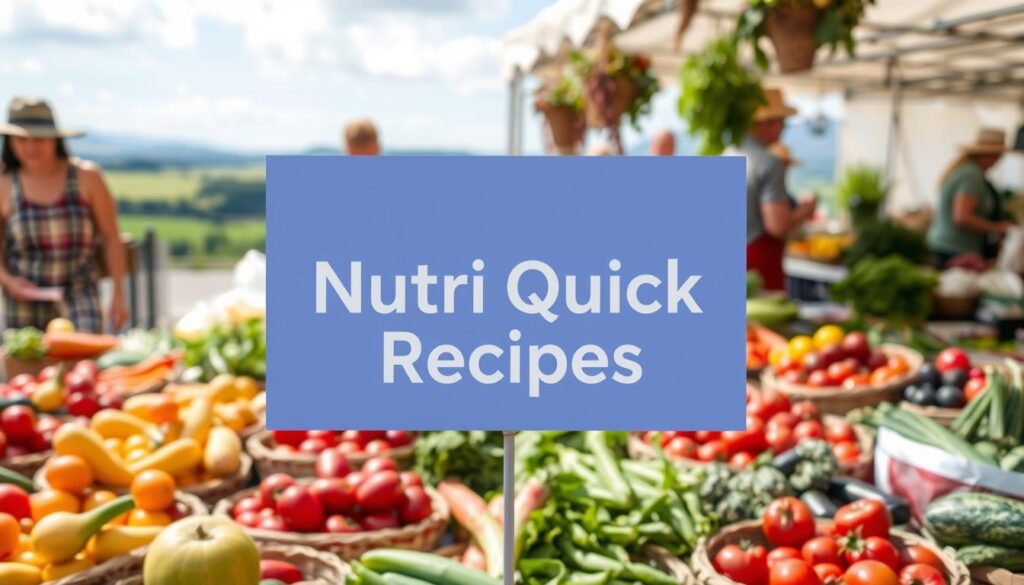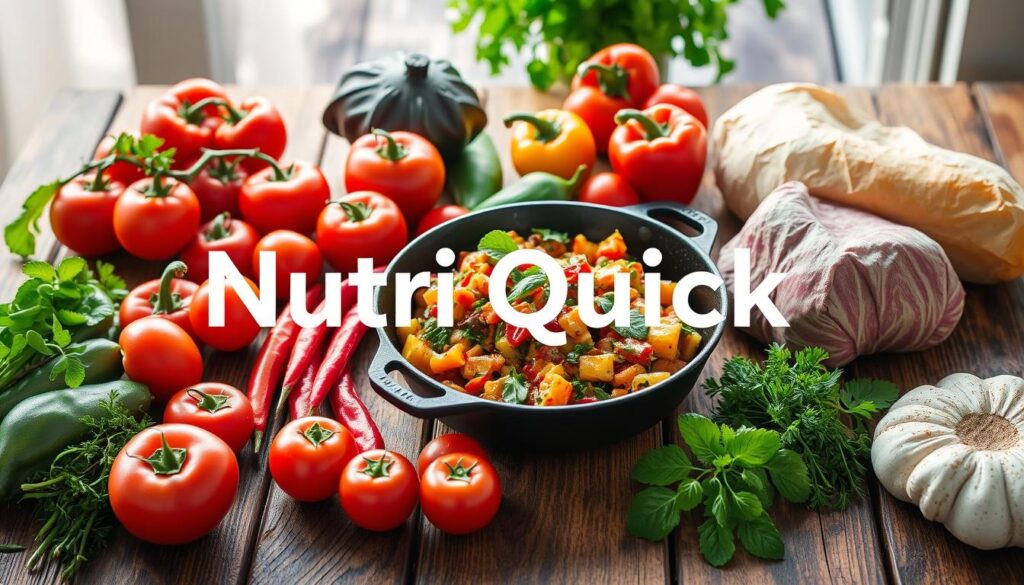Have you ever thought about why remote communities are often healthier and more connected to their food? The Farm-to-Table diet is more than a trend. It’s a way to change how we see food1.
Choosing local food is not just about what we eat. It’s a way of life that links us to farmers and their food. In Northern Ireland, SPAR Supermarket in Ballycastle showed this by spending £100,000 on fresh food. This shows how local stores can help us eat better1.
Starting your journey with locally sourced food means understanding its impact. It’s not just about your health. It affects the whole environment. Remote communities have always known this, keeping a close bond between land, food, and health.
Key Takeaways
- Farm-to-Table diet connects consumers directly with local food sources
- Sustainable eating supports local economies and reduces environmental impact
- Remote communities offer valuable insights into holistic food practices
- Local sourcing enhances nutritional value of consumed foods
- Understanding food origins promotes healthier dietary choices
Understanding the Farm-to-Table Concept
The farm-to-table movement is a new way of eating. It connects people with local food sources. This idea changes how we see nutrition and support for our communities.
At its heart, farm-to-table aims to make food systems clear and green. Eating local isn’t just a trend—it’s a lifestyle choice that impacts health, economy, and environment.
Definition and Origins
The farm-to-table idea started as a reaction to big food production. It’s all about:
- Buying food straight from local farmers
- Less food travel
- Using seasonal and fresh foods
- Helping local farms grow
Principles of a Farm-to-Table Diet
Your farm-to-table diet should include:
- Picking local produce
- Knowing when foods are in season
- Backing small farmers
- Lowering carbon footprint
Benefits for Consumers and Farmers
| Consumer Benefits | Farmer Benefits |
|---|---|
| More nutritious food | Fair pay |
| Fresher ingredients | Direct sales |
| Helping local economy | Less transport costs |
“Eating local is not just about food, it’s about building community and sustainable ecosystems.”
Choosing an organic meal plan and fresh produce delivery does more than feed you. It joins you in a movement of sustainable eating2.
The Role of Local Communities in Sustainable Eating
Local communities are key in changing how we grow and eat food. Community supported agriculture (CSA) is a strong method to link people with local food systems. It makes food more sustainable and clear.
By joining CSA, you do more than buy food. You support local farmers and help build a strong local food system. This brings many benefits:
- Direct connection between farmers and consumers
- Fresher, more nutritious seasonal cooking options
- Less transportation costs and carbon footprint
- Help for small-scale local agriculture
Understanding CSA Models
CSA works on a simple yet effective model. People buy shares or subscriptions from local farms. They get regular deliveries of fresh produce. This direct relationship ensures transparency and mutual support.
“Supporting local farmers means investing in your community’s food future.” – Local Food Advocate
Impact of Local Farmers on Food Choices
Local farmers shape our diets by introducing diverse, seasonal foods. They encourage us to choose healthier, locally grown foods over processed ones.
Seasonal cooking becomes more fun and easy when you know the local food cycle. You’ll find new veggies, learn cool recipes, and appreciate farming more.
Nutritional Benefits of Fresh, Local Produce
Starting healthy eating habits means understanding the power of fresh ingredients. Your body needs nutrients straight from nature, not from processed foods.
Choosing local produce is a strong statement for your health. Seasonal foods offer amazing nutritional benefits:
- More vitamins than transported produce
- Minerals stay intact
- Less preservatives
- Better taste and nutrients
Vitamins and Minerals in Seasonal Foods
Seasonal foods give you a natural nutritional boost. Locally grown fruits and vegetables are picked at the best time, keeping more nutrients. Kroger’s Simple Truth Rescue bundles show a big push for better eating habits.
“Eat local, eat fresh, and your body will thank you.”
Avoiding Processed Ingredients
Processed foods can lose nutrients and add bad stuff. Choosing farm-fresh ingredients means you get whole foods that help your body heal and have energy1. Stores like Aldi are adding healthier options, like vegan and protein pizzas.
Start your journey to better nutrition by making smart food choices. Go for local, seasonal, and less processed foods for the best health.
How Remote Communities Influence the Farm-to-Table Movement

Remote communities worldwide have always been champions of sustainable eating and local food. Their old ways of farming and food making show us how to connect with our food and the planet better.
Indigenous groups have amazing ways to eat sustainably that we can all learn from. Their methods are not just about growing food. They show a deep bond with nature.
Traditional Farming Practices That Inspire Sustainable Eating
- Crop rotation techniques that maintain soil health
- Water conservation methods developed over generations
- Seed preservation and heritage crop cultivation
Many remote communities eat sustainably by using smart farming systems. These systems cut down on waste and use resources wisely. Their farming shows they really get how nature works3.
Indigenous Approaches to Local Food Systems
| Community | Sustainable Practice | Environmental Impact |
|---|---|---|
| Andean Farmers | Vertical Farming | Soil Conservation |
| Pacific Island Communities | Marine Resource Management | Sustainable Fishing |
| African Pastoral Societies | Nomadic Grazing | Ecosystem Preservation |
“Our connection to the land is not just about food, but about sustaining life itself.” – Indigenous Agricultural Elder
By choosing local food and old farming wisdom, these groups show us sustainable eating is more than a trend. It’s a life choice that honors both people and the earth4.
Accessibility of Farm-to-Table Options in Urban Areas
Urban dwellers are finding new ways to get fresh produce delivered right to their homes. The world of farm-fresh ingredients has changed a lot. Now, eating local and sustainable is easier than ever.
Cities are now hubs for farm-to-table experiences. People have many ways to get high-quality, local food:
- Farmers’ markets with diverse fresh produce
- Community-supported agriculture programs
- Digital platforms for fresh produce delivery
- Local restaurant partnerships with regional farmers
Farmers’ Markets: A Hub for Fresh Produce
Farmers’ markets are lively spots where city folks meet local farmers. These markets are more than veggies – they’re a dive into regional food culture.
| Market Type | Average Weekly Visitors | Local Produce Variety |
|---|---|---|
| Urban Neighborhood Markets | 500-1,500 | 15-25 Different Crops |
| Downtown Community Markets | 1,500-3,000 | 25-40 Different Crops |
Local Restaurants Advocating for Local Sourcing
Urban restaurants are key in pushing for farm-fresh ingredients. They team up with local farmers. This creates a loop that supports local farming and gives diners amazing food5.
The closer your food’s origin, the richer its flavor and nutritional value.
Your food choices can help local economies and farming. Join the farm-to-table movement. Check out local markets, support neighborhood restaurants, and choose fresh produce delivery in your area.
The Economic Impact of Eating Local

Choosing locally sourced food does more than just fill your pantry. It supports small businesses and local farmers6. Community supported agriculture helps grow local economies and creates jobs.
Supporting Small Businesses and Farmers
Local food systems bring big economic wins to communities. Small farmers and local food makers get direct money from consumers. This support brings:
- More money for local farms
- Stronger local economies
- Less money spent on shipping
Job Creation in Agricultural Sectors
Buying locally made food creates real jobs. Small farms and community supported agriculture offer jobs in many areas7:
| Sector | Job Opportunities |
|---|---|
| Farm Production | Jobs on the farm |
| Food Processing | Jobs in local food making |
| Distribution | Jobs in getting food to stores |
| Retail | Jobs at farmers markets and local shops |
“Supporting local agriculture is an investment in your community’s economic future.”
By choosing local food, you help build a strong, lasting economic model. This model benefits farmers, workers, and everyone who eats.
Overcoming Challenges in the Farm-to-Table Model

The farm-to-table movement is growing, but it faces big hurdles. It needs new ways to solve problems in the food supply chain. This is key for local food systems8.
- Labor shortages affect farm work8
- Food prices can change a lot
- Land can get damaged
- Supply chains can break down
Navigating Seasonal Availability Challenges
Seasonal cooking needs smart plans to deal with changes. Many US farms struggle with finding enough workers, making it hard to grow food8. New food tech is coming to help, with a focus on healthy foods8.
“Sustainable agriculture is not just about production, but about creating resilient food systems”
Education and Strategic Solutions
Fixing supply chain problems needs better education. People are starting to believe in food tech more, which is good news8.
| Challenge | Potential Solution |
|---|---|
| Labor Shortages | Technological Integration |
| Seasonal Limitations | Diversified Crop Planning |
| Land Degradation | Regenerative Agriculture Techniques |
By understanding and adapting to these challenges, you can help make seasonal cooking and sustainable eating better in your area.
Cooking and Preparing Farm-Fresh Meals

Seasonal cooking turns your kitchen into a lively place of creativity. Farm-fresh ingredients add amazing flavor and health to your meals. They connect you with local farming traditions.
Techniques for Preserving Freshness
Keeping seasonal cooking fresh needs smart preservation methods. Here are some tips to keep your ingredients fresh:
- Refrigerate produce right after buying
- Use containers that let air in
- Wash veggies just before cooking
- Store herbs in water like flowers
Easy Recipes Using Seasonal Ingredients
Turning farm-fresh ingredients into tasty meals is easy. You don’t need to be a pro chef. Here’s how to make great dishes:
| Season | Ingredient | Quick Recipe |
|---|---|---|
| Spring | Asparagus | Roasted with olive oil and garlic |
| Summer | Tomatoes | Fresh caprese salad |
| Autumn | Squash | Hearty vegetable soup |
| Winter | Root vegetables | Herb-roasted medley |
“Cooking with seasonal ingredients is like painting with nature’s palette – each bite tells a story of local harvest and tradition.”
Start your seasonal cooking journey with local, farm-fresh ingredients. Learn preservation tips and try simple recipes. You’ll improve your cooking and support local farmers9.
The Environmental Benefits of Farm-to-Table
Sustainable eating is more than just good for you—it’s great for the planet. Farm-to-table methods bring big environmental wins. They change how we see food and nature.
Reducing Carbon Footprint Through Local Sourcing
Choosing local food cuts down on emissions from transport. Organic plans that focus on nearby farms can cut carbon by up to 90%4. This helps save fuel and supports local farms.
- Shorter transportation distances
- Lower greenhouse gas emissions
- Reduced packaging waste
Promoting Biodiversity and Soil Health
Local farming is key to a healthy planet. Small farms use different crops to improve soil and keep nature in balance10. This protects wildlife and keeps farming diverse.
“Every meal is an opportunity to support environmental regeneration.” – Sustainable Agriculture Network
By choosing sustainable food, you help the environment. Your choices affect soil, biodiversity, and the planet’s health4.
Source: Environmental Protection Agency Agricultural Emissions Report10Source: Global Biodiversity Conservation Research Institute
Future Trends in Farm-to-Table Eating
The world of sustainable eating is changing fast. New technologies and ways of thinking are making food production and use better. Your farm-to-table diet is getting smarter and more efficient, thanks to tech and what people want8.
Artificial intelligence is changing the food industry. It promises to make things more efficient8. Companies like Simbe Robotics are working on systems to manage inventory better and cut down on food waste. Farms in the U.S. are also finding ways to deal with labor shortages8.
The future of eating sustainably is exciting. Plant-based diets are becoming more popular, with tech and food sectors expecting big changes by 20258. Your local food scene is getting more connected. Restaurants and food services are looking for people to help with these new ways of eating8.
Innovations in Sustainable Agriculture
Technology is helping with the challenges facing farmland. One-third of land is facing serious problems, but tech offers hope for better food systems8. By choosing sustainable eating, you support local farmers and help the planet and our food.
The Rise of Plant-Based Diets and Local Sourcing
Local food is more than a trend; it’s key for healthy eating and the planet. By choosing farm-to-table, you’re part of a bigger movement. It’s about making food systems stronger and healthier.
FAQ
What exactly is the Farm-to-Table movement?
How can I participate in Community Supported Agriculture (CSA)?
What are the nutritional benefits of farm-to-table eating?
How does farm-to-table eating support local economies?
Are farm-to-table options accessible in urban areas?
What challenges does the farm-to-table model face?
How can technology support farm-to-table practices?
What environmental benefits does farm-to-table eating offer?
Source Links
- NIQ: M&S had strong Christmas for food
- Financial services all in one location; Hoff Financial
- Food Waste Solutions in the Next Farm Bill
- Ten issues to watch this year: Farm and agriculture policy faces broad uncertainty
- Speaker Mike Johnson says Trump is the coach calling plays. But what if coach changes his mind?
- New Grant Opportunities Open for Agriculture, Food, and Nutrition Projects! Apply Now – fundsforNGOs
- Key investment themes to watch in 2025
- FoodTech 2025: The Top Breakthrough Technologies & Investment Outlook From Leading VCs
- Casey’s Launches New Darn Good Coffee Blends With Free Unlimited Cup Offer
- Why Are Swallowable Gastric Balloons Banned? Detailed Explanation from an Expert!

